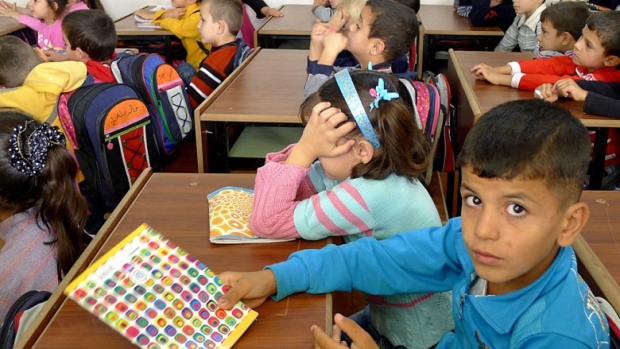Canadá/Junio de 2017/Fuente: CBC News
Fuente: Una recaudación de fondos desigual en las escuelas de Ontario está ampliando la brecha entre los niños de familias de ingresos altos y bajos, según un grupo de defensa de la educación. Según un informe de People for Education, el abismo que separa las escuelas que más dinero recaudan y las escuelas que aumentan menos se ha duplicado en la última década. Por cada dólar que suba el 10 por ciento, el 10 por ciento sube $ 49, el grupo encontró.
Uneven fundraising by Ontario schools is widening the gap between children from high- and low-income families, an education advocacy group says.
According to a report from People for Education, the chasm separating schools that raise the most money and schools that raise the least has doubled over the past decade. For every dollar the bottom 10 per cent raises, the top 10 per cent raises $49, the group found.
‘We were surprised by how much the gap has grown.’– Annie Kidder, People for Education
«We were surprised by how much the gap has grown,» said Annie Kidder, the group’s executive director. «It’s paying for everything from laptops to library books to playing fields.»
Topping the list in 2015 was a school that raised $250,000, while some schools raised nothing. Eastern Ontario elementary schools ranked second-lowest in median fundraising, according to the data.
Nearly all elementary and secondary schools in Ontario reported holding fundraising activities in 2015.
Kidder said successful schools may be using the money to build new playgrounds, while lower earners might struggle to implement basic breakfast programs.
«You create these have and have not schools,» she said.
Province sets rules
The Ontario government sets rules around fundraising by public schools. For example, the funds can’t be used to pay for things that generally come from provincial grants, such as textbooks or building repairs.
«Field trips, guest speakers and scholarships are appropriate, but capital projects that significantly increase operating costs, classroom learning materials and textbooks are not, because they are already publicly funded,» said Heather Irwin, a Ministry of Education spokesperson.
The ministry suggests schools use the money they raise to fund scholarships or field trips, but schools are only mandated to report the amount they collect — not what they spend it on.
The province encourages school boards to fund matching programs in different schools throughout their districts, but in the end the distribution of funds is up to the boards, which have different policies.
Rules too vague, advocate says
«We are not saying fundraising should be banned,» Kidder said. «The problem comes with where we draw the line. The line is kind of grey right now.»
Kidder calls the result a «double advantage, double disadvantage situation» because children from wealthier backgrounds tend to attend schools that raise more money, while children from low-income families tend to go to schools that raise less.
«The premise of public education is to level the playing field. We wish our schools wouldn’t replicate the inequity we have on the outside,» Kidder said.
People for Education is calling on the government to come up with stricter rules governing fundraising and the distribution of that money among schools.
«I hope it’s everybody’s hope that schools are equal.»
Fuente: http://www.cbc.ca/news/canada/ottawa/fundraising-gap-ontario-schools-1.4147149








 Users Today : 6
Users Today : 6 Total Users : 35460269
Total Users : 35460269 Views Today : 7
Views Today : 7 Total views : 3418975
Total views : 3418975